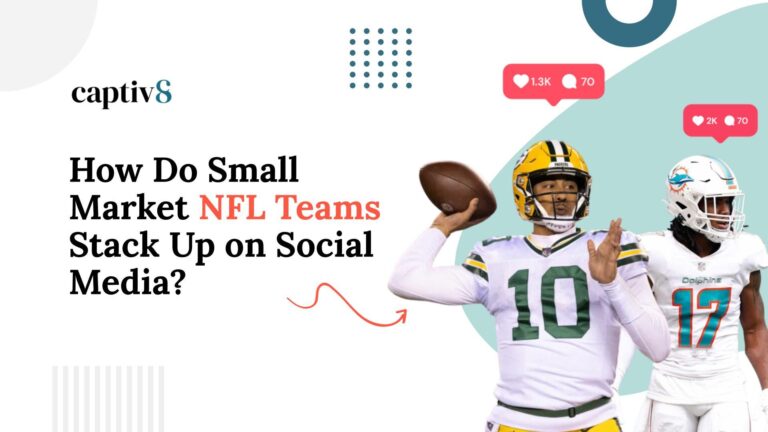Unrivaled Growth: How NFL Franchises Are Redefining the U.S. Sports Market
Dominance of NFL Franchises in America’s Sports Economy
The National Football League (NFL) has firmly entrenched itself as the leading force in the American sports industry, with the combined worth of its franchises soaring past an astonishing $228 billion. This financial milestone highlights the league’s unparalleled commercial success and widespread popularity. At the forefront of this economic boom are three NFC teams, each valued at over $10 billion, placing them among the most valuable sports franchises globally. Their impressive valuations reflect a blend of strategic business operations, passionate fan engagement, and the ever-increasing appeal of football as the nation’s favorite sport.
Several critical elements fuel this financial momentum:
- Lucrative media rights agreements: Multi-billion-dollar broadcasting deals that significantly boost league and team incomes.
- Innovative fan engagement: Enhanced digital platforms and immersive stadium experiences that deepen fan loyalty and increase spending.
- Global merchandising strategies: Expanding brand reach through licensed products and international partnerships.
- Investment in cutting-edge stadiums: Modern venues that attract premium audiences and host diverse events.
| Leading NFC Franchises | Valuation (in Billions) | Primary Revenue Streams |
|---|---|---|
| Dallas Cowboys | 10.8 | Broadcasting Rights, Sponsorship Deals |
| San Francisco 49ers | 10.3 | Merchandise Sales, Ticket Revenue |
| New York Giants | 10.1 | Media Contracts, Stadium Events |
The Elite NFC Franchises Surpassing the $10 Billion Threshold
Only a handful of NFC teams have achieved the rare feat of crossing the $10 billion valuation mark, cementing their status as financial powerhouses within the NFL. These franchises combine historic prestige with modern business savvy, leveraging expansive fan bases, lucrative merchandising, and strategic media partnerships to drive their exceptional growth. Their success is also bolstered by state-of-the-art stadiums that enhance fan experiences and generate substantial revenue.
Key contributors to their rapid expansion include:
- Long-term, high-value sponsorship contracts that diversify income streams
- Advanced stadium infrastructures offering premium amenities and entertainment
- Global marketing efforts tapping into international fan markets
- Consistent on-field competitiveness that sustains fan enthusiasm
| Team | Valuation (Billion $) | Stadium Worth (Million $) |
|---|---|---|
| Dallas Cowboys | 9.9 | 1,300 |
| New York Giants | 10.5 | 1,200 |
| Los Angeles Rams | 11.2 | 1,450 |
Core Elements Driving NFL Franchise Valuations and Market Leadership
The NFL’s remarkable franchise valuations stem from a combination of strategic market positioning, devoted fan bases, and expansive media rights agreements. Teams located in major urban centers benefit from large, diverse audiences, strong corporate sponsorships, and thriving local economies, all of which contribute to their financial growth. The surge in digital streaming and broadcasting platforms has further amplified the league’s reach, with media rights deals now exceeding $10 billion annually, highlighting the NFL’s dominant commercial appeal.
Operational excellence and stadium innovation also play crucial roles. Investments in technologically advanced venues equipped with premium services enhance the fan experience, leading to increased ticket sales and higher spending per attendee. Additionally, franchises maximize revenue through merchandising and licensing, creating a diversified income portfolio. Below is an overview of the primary factors influencing franchise valuations:
- Strategic market location and demographic advantages
- Expansion and diversification of media rights
- Upgrades to stadium facilities and in-game experiences
- Global brand development and merchandise sales
- Robust sponsorship and partnership networks
| Valuation Driver | Estimated Impact on Value |
|---|---|
| Media Rights | +35% |
| Market Size | +25% |
| Stadium Revenue | +20% |
| Sponsorship Deals | +15% |
| Merchandising | +5% |
Investment Insights: Capitalizing on NFL Franchise Growth Opportunities
For investors aiming to tap into the escalating value of NFL franchises, diversification across major league teams is essential. The presence of NFC teams in the exclusive $10 billion valuation club highlights the scarcity and potential of these high-value assets. Targeting franchises with strong national and international fan bases offers significant upside. Additionally, forging strategic alliances centered on media rights and digital content distribution can accelerate revenue growth beyond traditional avenues like ticket sales and merchandise.
Emerging technologies such as augmented reality (AR), virtual reality (VR), and blockchain-based fan engagement platforms are revolutionizing how fans interact with teams, opening new revenue streams and enhancing loyalty. Investors should also prioritize sustainability and community involvement, as franchises that adopt eco-friendly stadium designs and invest in local outreach programs not only improve their public image but also reduce operational costs over time.
| Growth Factor | Investor Strategy | Expected Outcome |
|---|---|---|
| Media Rights | Negotiate long-term, multi-platform contracts | Increases consistent revenue streams |
| Fan Engagement | Integrate cutting-edge digital technologies | Boosts fan loyalty and spending |
| Sustainability | Invest in green infrastructure and operations | Enhances brand reputation and lowers costs |
| Community Outreach | Develop impactful local programs | Strengthens brand authenticity and support |
Conclusion: The NFL’s Expanding Influence on American Sports and Business
The NFL’s continued ascent as the preeminent force in the U.S. sports market is reflected in the soaring valuations of its franchises. With three NFC teams now valued above $10 billion, football’s economic and cultural impact is reshaping the American sports landscape. As franchise values climb, the league’s influence extends well beyond the playing field, driving innovation, community engagement, and economic growth that will shape the future of professional sports in the United States.







